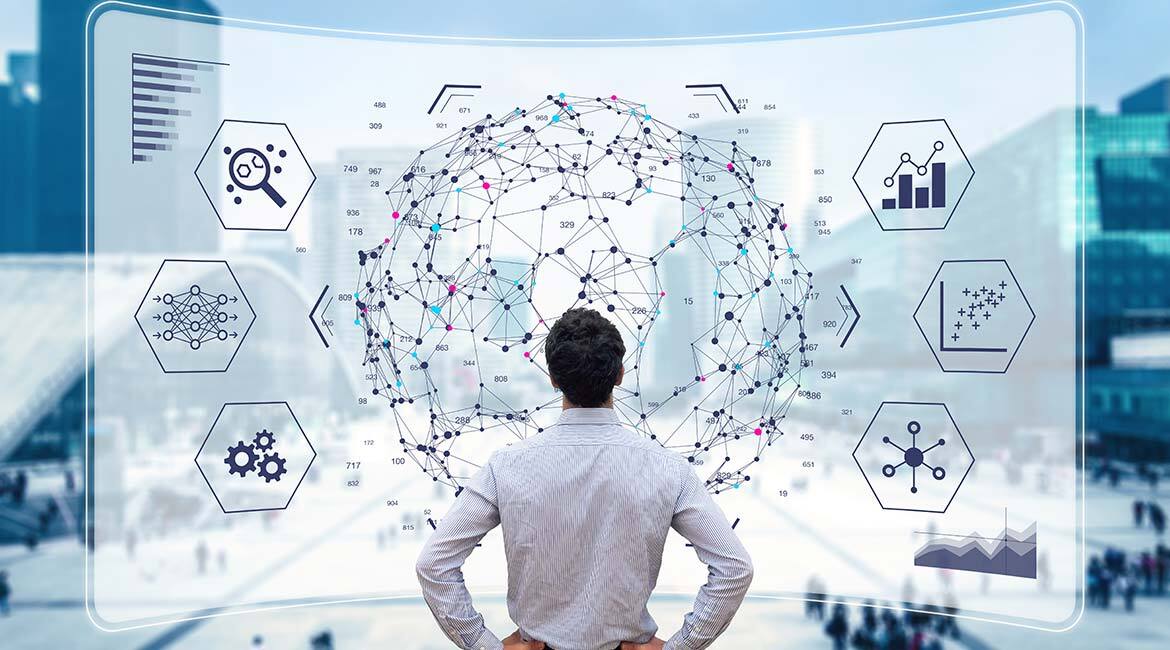
Thanks to a wide range of training techniques, computers can perform specific tasks. These techniques, known as artificial intelligence, can simulate human intelligence. Different strategies are used depending on the complexity of the task and the data available for training.
Deep Learning: Network Training Inspired by the Human Brain
Deep learning is based on complex mathematical algorithms that feed a multilayered neural network. Knowledge is acquired through examples. So, to identify an object in an image, an artificial intelligence system needs to be shown thousands or even millions of images containing the object in question.
The object’s contours must be clearly defined beforehand by a human to help the computer interpret the images correctly. Only then, at the end of this painstaking process, will a machine become capable of interpreting images as humans do… even if we are still a long way off!
Because acquiring examples for training is a costly and time-consuming process, a number of strategies have been implemented to alleviate the problem and make algorithms more efficient—synthetic data, multimodal processing, automated segmentation… Researchers at ÉTS are hard at work improving these techniques or harnessing them to solve some of society’s major challenges, such as environmental issues, communications and labour shortages.
To show the full potential of these techniques, we present five examples of engineering research in which artificial intelligence plays a key role.
From the Laboratory to the Real World

Now used in a wide range of fields, artificial intelligence is at the heart of the technological developments that will bring us autonomous vehicles. To achieve this, a number of challenges must be addressed. One is overcoming the gap between the real world, and the computer-generated data used to train the model. Mohammadhadi Shateri has made this one of his main research topics. His approach has the advantage of avoiding the time-consuming and costly step of data labelling.
Making Communication Networks more Efficient
Resource management in the communications field is becoming increasingly complex as networks are branching out. The conventional optimization algorithms used until now are no longer up to the task. Artificial intelligence could better manage these resources. This is one of Bassant Selim’s favourite subjects.
Some applications, such as driverless cars, require minimal response times (latency) and error rates. Artificial intelligence algorithms can better manage priorities from numerous requests while minimizing energy consumption.

Better Flood Forecasting

Every year, melting snow raises fears of flooding in many parts of Quebec, which is why it is so important to predict river flows and overflow areas. Data are sometimes insufficient for current hydrological models to be truly accurate. Jean-Luc Martel and the research team at HC3 Laboratory feed and train neural networks from a database of 15,000 watersheds. These networks can take all the available data and identify links between different variables to make better forecasts.
Optimizing Aircraft Traffic on the Ground
Little attention is paid to aircraft routes while they are on the ground. However, when considering the amount of kerosene burned in a year, the potential savings become significant. Queues slow down ground traffic and increase waiting times for available runways. Georges Ghazi’s research focuses on automating ground routes so that aircraft and other vehicles on the tarmac can take the shortest route while avoiding collisions.

Coordinating Robotic Vision with Touch

Although computer vision has been the subject of much research in recent decades, visual data does not solve all the problems, especially when the robot’s vision is obstructed or the objects it handles are fragile or deformable. Jean-Philippe Roberge uses artificial intelligence algorithms to analyze data from sophisticated tactile sensors, which can detect contact between the robot’s gripper and the object, as well as vibrations occurring during handling. Analyzing these data helps detect objects slipping, for example, allowing the robot to rectify its grip before the object falls to the ground.
Conclusion
Despite recent controversy surrounding the advent of ChatGPT, artificial intelligence will help solve many of society’s most pressing problems. It’s up to us to set boundaries to reduce the risk of it getting out of control.


